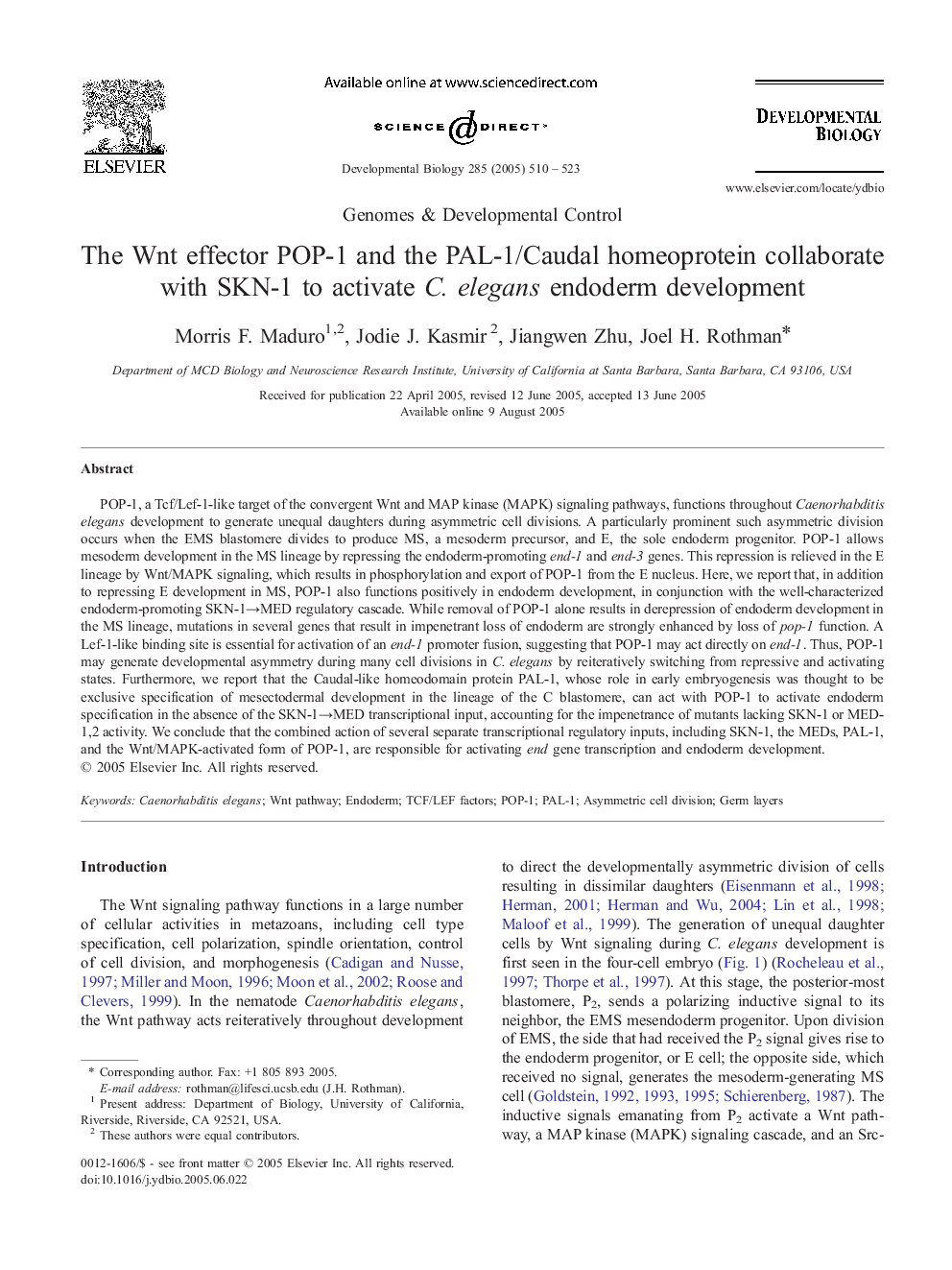| Article ID | Journal | Published Year | Pages | File Type |
|---|---|---|---|---|
| 10934031 | Developmental Biology | 2005 | 14 Pages |
Abstract
POP-1, a Tcf/Lef-1-like target of the convergent Wnt and MAP kinase (MAPK) signaling pathways, functions throughout Caenorhabditis elegans development to generate unequal daughters during asymmetric cell divisions. A particularly prominent such asymmetric division occurs when the EMS blastomere divides to produce MS, a mesoderm precursor, and E, the sole endoderm progenitor. POP-1 allows mesoderm development in the MS lineage by repressing the endoderm-promoting end-1 and end-3 genes. This repression is relieved in the E lineage by Wnt/MAPK signaling, which results in phosphorylation and export of POP-1 from the E nucleus. Here, we report that, in addition to repressing E development in MS, POP-1 also functions positively in endoderm development, in conjunction with the well-characterized endoderm-promoting SKN-1âMED regulatory cascade. While removal of POP-1 alone results in derepression of endoderm development in the MS lineage, mutations in several genes that result in impenetrant loss of endoderm are strongly enhanced by loss of pop-1 function. A Lef-1-like binding site is essential for activation of an end-1 promoter fusion, suggesting that POP-1 may act directly on end-1. Thus, POP-1 may generate developmental asymmetry during many cell divisions in C. elegans by reiteratively switching from repressive and activating states. Furthermore, we report that the Caudal-like homeodomain protein PAL-1, whose role in early embryogenesis was thought to be exclusive specification of mesectodermal development in the lineage of the C blastomere, can act with POP-1 to activate endoderm specification in the absence of the SKN-1âMED transcriptional input, accounting for the impenetrance of mutants lacking SKN-1 or MED-1,2 activity. We conclude that the combined action of several separate transcriptional regulatory inputs, including SKN-1, the MEDs, PAL-1, and the Wnt/MAPK-activated form of POP-1, are responsible for activating end gene transcription and endoderm development.
Related Topics
Life Sciences
Biochemistry, Genetics and Molecular Biology
Cell Biology
Authors
Morris F. Maduro, Jodie J. Kasmir, Jiangwen Zhu, Joel H. Rothman,
